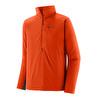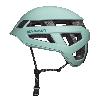Chad Climbing Expedition 2015

 1 / 38
1 / 38 Mountime
Mountime
The seed had been sown and a year later I joined Piero on a journey to northern Mali, to the Main de Fatma and the famous sandstone towers in the Hombori region. This turned out to be an unforgettable experience, and was soon followed by other trekking and climbing trips to Algeria’s Hoggar Tesnou and Tefedest massifs.
I was 22 at the time, I’d only recently qualified as a Mountain Guide and the trust Spazi d’Avventura placed in me, in accompanying their groups, was by no means taken for granted and I’ll always be grateful to them for their faith in me. Having said that, the Ravà are used to forging full steam ahead: as a young medical student Piero, partnered Casimiro Ferrari on Cerro Torre in 1970 and narrowly missed out on the first ascent of the most coveted mountain in the world (in 1974 he decided not to take part in the victorious expedition in order to graduate). For his part, Rocco at the start of the 90’s climbed regularly with Giorgio Anghileri and when they were twenty they’d already climbed many of the most demanding routes in the Dolomites.
We’d often talked about a mountaineering trip to Chad, where Spazi d’Avventura has its operational base and where the potential for climbing is still largely undiscovered. The last expedition of this sort dates back to 1964, when Guido Monzino led a group of Italian climbers into the Tibesti, the highest of the Saharan massifs. In 2010 Piero accompanied a The North Face expedition to the the majestic Ennedi sandstone towers, and it is perhaps thanks to the photos and videos shot during that trip that climbing in the Sahara first captured the imagination of a wider audience..
Our idea of exploring the granite towers in Chad’s Guera region remained locked away for a few seasons, but in 2015 the time was finally ripe. With our Mountime group almost complete (Simone, we missed you!) we managed to organize an alternative company holiday; Piero steered the jeep and once again led us into "his" world. I’ve always thought that you don’t need to go who knows where in search of adventure, that you can find it just outside your doorstep, but I was overjoyed to go on this trip with my friends, heading off to an unexplored massif of which we’d only seen some photos taken from a far. In this day and age, where there is very little left to be discovered, this seems like quite a privilege…
... The Sahel unfolded as we looked out of the windows, arid and borderless. If you’re used to living in the mountains, wedged in between the mountains, crossing a land as flat and regular as this one can be disarming. Without a horizon for a reference point, you feel like a cast away at sea. Then, all of a sudden, a series of towers rise up from the flatlands without warning, surreal, like a giant sand castle built by a child on the beach, and your heart breathes a sigh of relief.
As tradition dictated we first visited the village chief in Abtouyour, the main center of the area, to inform him of our planned activity and to ask for permission to climb the surrounding mountains. After having received his approval we established camp at the base of the walls and the next day we split into two teams and reccied two different peaks. Stefano, Fabrizio and Jiri chose a tower called Chayà, while Matteo Faletti, Alessandro Lucchi and I discovered a good-looking line up the North Face of Abtouyour, the tower that gives the village its name. This peak resembles a strange mushroom and the summit is inhabited by hundreds of birds of all shapes and sized: vultures, marabou storks, hawks, storks and ... well an expert bird watched would certainly have identified many more!
On day one we climbed fairly high and then returned the next morning to complete the last pitches, but before gaining much hut a bunch of men scrambled up the slope and started shouting loudly, telling us to get off immediately… somewhat puzzled we looked down at our base camp where we one Piero was waiting for us and saw than more than a hundred people had gathered there. We understood things were serious, rappelled and reached our "fans" at the base of the wall who wanted to know exactly what we were looking for. Explaining our intentions was not easy, to people who are used to fighting for survival every day and haven’t read Lionel Terray’s "Conquistadors of the Useless"… The best thing that sprung to mind was something along the lines of "It’s just a sport, we’re not looking for anything in particular ... it's like football, but where we live there are only rocks and mountains and little space for football fields, so when we’re children we learn how to climb ;-)"... This was followed by an intensive rock climbing course to explain all that strange gear (friends, pegs, etc.) stowed away in our rucksacks.
Having said that, we were then escorted to our base camp where we were met by virtually the whole village and we finally got to understand the situation a little better: there had been a kind of uprising, some had gone to the village chief and ordered him to withdraw permission to climb Abtouyour, whose sacredness evidently hadn’t been shared with us... the chief had no option but to withdraw permission, telling us he’d misunderstood our intentions, adding that we could climb scale everywhere else, on all other mountains, just not that one. Happy to have avoided public lynching andy no means bitter about the unfinished climb, we apologised to everyone stating that we really hadn’t wanted to offend anyone, that had we known the summit was sacred, we certainly wouldn’t have climbed there. And to make the atmosphere more pleasant we set up a slackline and spent the afternoon walking along this with the village children.
The other group of climbers returned that evening after having climbed a beautiful new route on Chayà, and we all agreed to move our camp to somewhere more "peaceful". This proved a good decision because after only a few kilometers some wonderful faces, steep and north-facing sprung into view. Three towers reminded us unmistakably of the Tre Cime di Lavaredo in the Dolomites. The village below felt as if it was still locked in the Middle Ages, entirely made of straw, with women carrying water in huge pumpkins on the heads and the pastors armed with spears, bow and arrows to defend themselves from hyenas that attack their livestock. This time the village elders gave us their blessing and we were only asked to check whether the summits had some water sources ...
Our first goal were two different crack lines on Berethè, but before doing this we had to chop our way through the tall grass and find a track that would lead us to the base of the cliff. This is part of the game, and provided unexpected encounters with baboons, Daman (Hyrax) and warthogs ... The actual climbing proved superb, via long and beautiful cracks and past compact slabs. Both parties reached the summit in the evening and we abseiled off together.
The next day we checked out the "Tre Cime" that, we’d discovered, were actually called Mulgugnù: In local dialect this means "place where they hide slaves", because centuries ago the local tribesmen hid here in order to escape from the raids carried out by the Sudanese Empire that carried out manhunts in these territories to make slaves.
Angelini, Dellai and Leskovjan launched up the east tower, where discovered a crazy series of chimney that crossed the entire pillar, starting up the north face and finishing on the south face just below the summit. Lucchi, Faletti and I opted for "Cima Ovest" that was split from bottom to top by an obvious corner. So as not to be too greedy we left the central tower untouched and, satisfied with our climb, we shifted our camp one more time to spend the remaining days in the Matayè subgroup. In addition to superb friction slabs, we climbed a real "dream pitch": a spectacular crack that leads directly to top of the highest mountain.
We had one day left and were were all pretty tired and satisfied enough to spend it resting, except for Matteo Faletti and Ale Lucchi who climbed one last difficult route and retuned to their tents late at night.
The return home now began: we left this world dictated by ancient rhythms and returned to N'djamena, to that absolute chaos of plastic and dust, so typical of African cities. Even now, just like during my the first time in Mali, when the plane took off I gelt like I was leaving a remote planet in a spaceship. It wouldn’t surprise me if the Guerà villagers had thought we were real extraterrestrials... for those who are born in this corner of the world, the few hours flight back to Europe are as distant as a trip on the Space Shuttle.
Having said that, certain realities provide more difficult questions than easy answers, but perhaps the universal value of travels are the change of perspective that force us to question so many aspects of our lives and the society in which we live. Or at least this, I believe, is what travels should do. This is challenged though by an old Venetian proverb than often springs to mind "Viazàr descànta, ma chi mòna parte, mòna resta!""
A heartfelt thanks to the entire Spazi d'Avventura team for "having made possible the impossible". Then again, it’s what they’re specialized in! I’d personally like to thank all the friends and Mountime Alpine Guides for having shared and taken part in this expedition: Jiri Leskovjan, Matteo Faletti, Stefano Angelini, Fabrizio Dellai, the "wild card" Alessandro Lucchi and Simone Banal who cheered us on from home! And last but not least, on behalf of everyone I’d like to thank all the families who support our climbing trips!
by Alessandro Beber
For further info: www.mountime.com and www.spazidavventura.com
| www | |
| www.mountime.com | |
| www.spazidavventura.com | |



 Copia link
Copia link


















 See all photos
See all photos






















